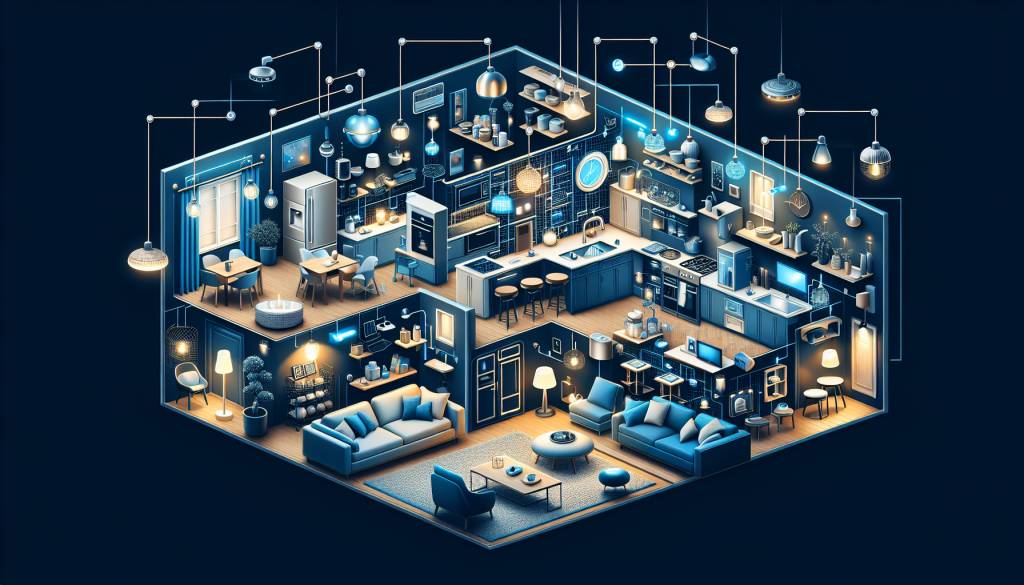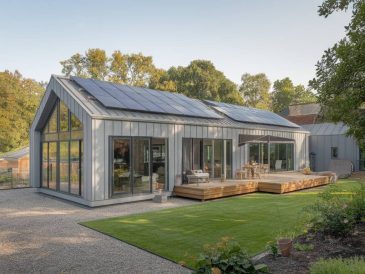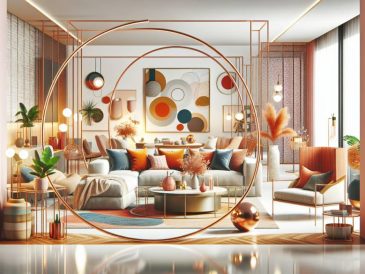Lighting is one of the most essential aspects of interior design. Not only does it create ambiance, but it also affects functionality in every room of your home. Choosing the right lighting fixtures can be a daunting task with the sheer variety of options available. This comprehensive guide aims to simplify the process by exploring the best lighting fixtures for different rooms in your home.
Living Room Lighting
The living room is often the focal point of a home, serving multiple purposes from relaxation to entertainment. The key to effective living room lighting is layering—combining ambient, task, and accent lighting to create a balanced and inviting atmosphere.
Ambient Lighting: Central to your living room’s lighting scheme, this can be achieved through chandeliers, ceiling-mounted fixtures, and even wall sconces. Opt for dimmable options to adjust the light intensity according to the time of day and activity.
Task Lighting: Task lighting is essential for activities like reading or knitting. Floor lamps and table lamps are ideal, offering focused, adjustable light. Look for fixtures with adjustable arms for added flexibility.
Accent Lighting: To highlight artwork, architectural features, or accent walls, consider using track lighting or wall-mounted spotlights. This adds depth and interest to your space.
Kitchen Lighting
The kitchen is both a functional workspace and a gathering spot for family and friends. Proper lighting in the kitchen is crucial for safety and efficiency. It typically combines ambient, task, and accent lighting effectively.
Ambient Lighting: Recessed ceiling lights or a central ceiling fixture can provide ample general lighting. Ensure that your ambient lighting is bright and covers all areas of the kitchen.
Task Lighting: Under-cabinet lights, pendant lights, and track lighting over countertops and cooking areas are crucial. These fixtures eliminate shadows and provide focused light where you need it most.
Accent Lighting: Consider using accent lighting inside glass-fronted cabinets or above upper cabinetry to add visual interest and highlight decorative elements.
Bedroom Lighting
The bedroom should be a sanctuary of relaxation, and the right lighting can make a significant difference. Soft, layered lighting helps create a tranquil and cozy atmosphere.
Ambient Lighting: Soft, diffuse light from ceiling fixtures or central chandeliers works well. Dimmer switches are highly recommended to adjust the light levels conducive to relaxation or reading.
Task Lighting: Bedside table lamps or wall-mounted reading lights are essential. Look for fixtures with adjustable heads to direct light precisely and prevent glare.
Accent Lighting: Use accent lights to highlight artwork, architectural features, or even inside closets. LED strip lights are an excellent choice for adding a soft glow underneath beds or behind headboards.
Bathroom Lighting
Bathrooms require a careful balance of function and aesthetics. Good lighting in a bathroom must cater to grooming tasks while also contributing to a relaxing spa-like atmosphere.
Ambient Lighting: Recessed ceiling lights or a central fixture can provide general illumination. Make sure the lighting is adequately bright to illuminate the entire space.
Task Lighting: Vanity lighting around mirrors is indispensable. Vertical fixtures on either side of the mirror or an LED mirror with integrated lighting provide even, shadow-free light for grooming tasks.
Accent Lighting: Small LED spotlights or strip lights can be used to accent features like alcoves, artworks, or even to illuminate bathtubs and showers. Ensure that all bathroom lighting is rated for damp or wet locations.
Home Office Lighting
The home office demands functional, glare-free lighting that enhances productivity. The key is to combine sufficient ambient lighting with task-specific lights.
Ambient Lighting: Ceilings or recessed lights can provide a solid base of general illumination. Consider adding a dimmer for adjusting the light according to the time of day and tasks at hand.
Task Lighting: Desk lamps with adjustable arms and heads are essential. Choose fixtures with good color rendering to make reading and writing more comfortable.
Accent Lighting: Use accent lighting sparingly to avoid distractions. However, a well-placed spotlight or LED strip lighting can highlight awards, shelves, or artwork to personalize your workspace.
Dining Room Lighting
The dining room is a place where aesthetics and function intersect. It requires lighting that enhances food presentation and creates a welcoming environment for meals.
Ambient Lighting: Chandeliers or pendant fixtures centered over the dining table create a focal point and provide general illumination. Opt for dimmable options to set the mood for different occasions.
Task Lighting: While less common, task lighting may include a buffet lamp on a sideboard for additional illumination during food preparation or serving.
Accent Lighting: Wall sconces, track lighting, or spotlights on artwork or decorative niches can add a sophisticated touch to your dining room design.
Outdoor Lighting
Outdoor spaces like patios, gardens, and walkways benefit from thoughtful lighting design. It not only extends the usability of these areas but also adds a layer of security and safety.
Ambient Lighting: Wall-mounted lanterns, porch lights, and post lights provide general illumination for outdoor living areas and entryways.
Task Lighting: Task lighting is essential for outdoor kitchens, grilling areas, or activity zones. Floodlights and adjustable spotlights can serve this purpose effectively.
Accent Lighting: Landscape lighting, such as spotlights on trees, pathway lights, or underwater lights for ponds, highlights the natural beauty of your outdoor spaces.
In conclusion, choosing the right lighting fixtures for each room is integral to both functionality and aesthetics. By layering various types of lighting—ambient, task, and accent—you can create a harmonious and well-lit home that meets all your needs.





